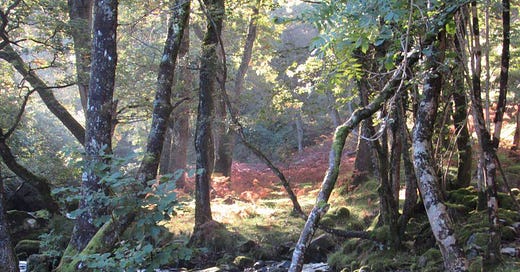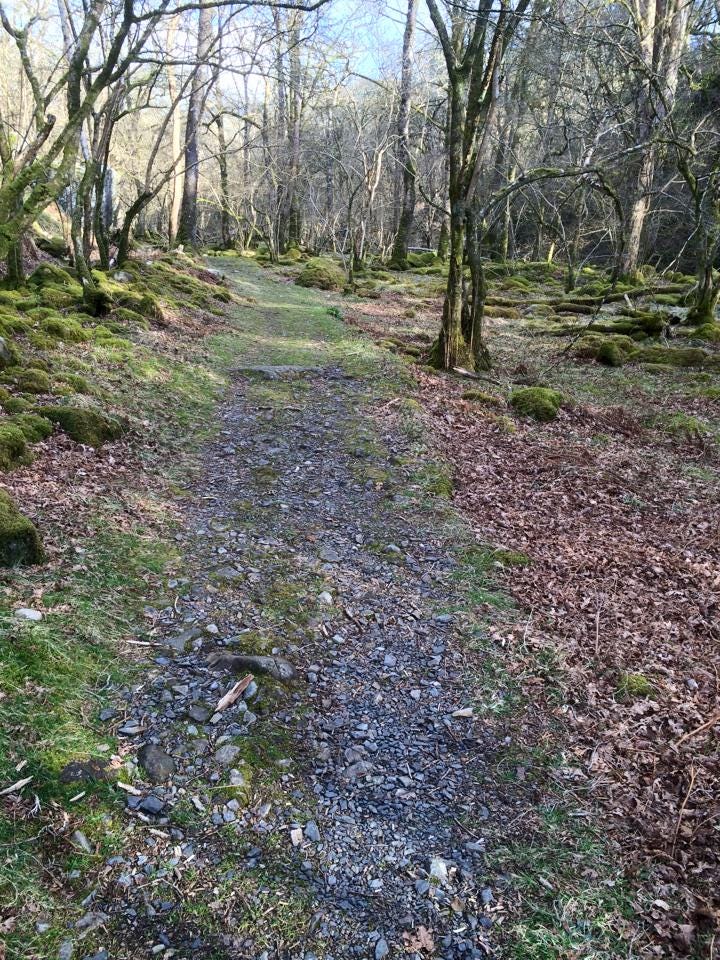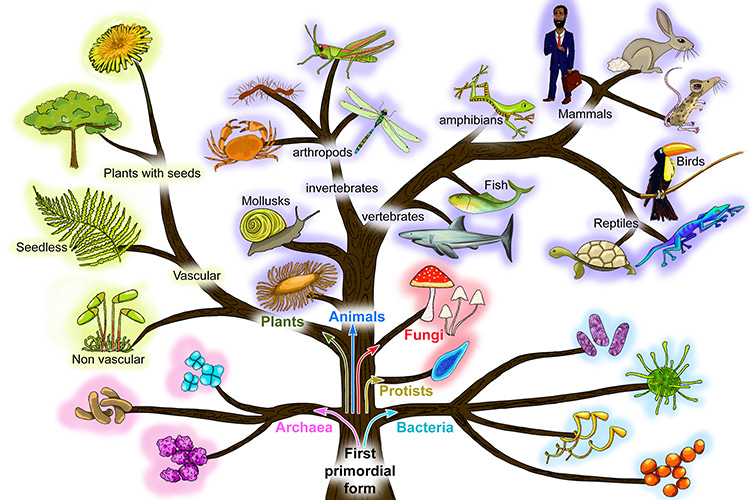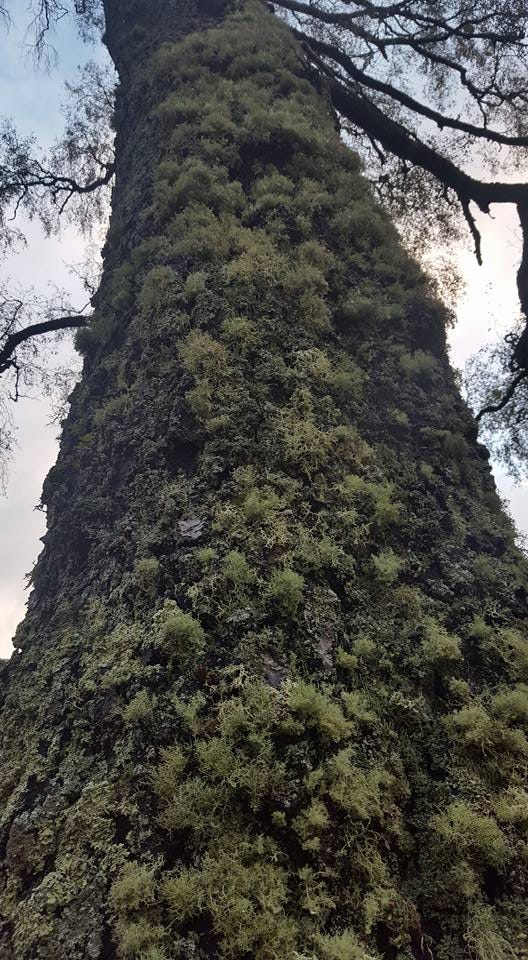It’s a nice day for going for going for a walk. Let’s go to the woods. You follow the path maybe chatting with a friend. Or if you are on your own you might be lost in your thoughts, planning the next days itinerary or menu, maybe checking text messages. You don’t really need to take that much notice of where you are going, you know the path well, you have been along it many times.
So why bother? Why did you bother going to the woods? You could have done any of the things mentioned (or millions of others) sat in your own back garden. Ah! You fancied a change of scenery. Why? It’s not as if you have taken any notice of your surroundings.
You didn’t think that you need to take that much notice - you say that you know the woods well. What you mean is that you know the route that the path takes through the woods.
Do you actually know anything other than the path? Do you know the trees or the plants, or anything else that calls that woodland home? When I say know, I mean really know!
Let’s start that walk again - together. Let’s go Woodlarking (answering the Call of the Wild, wandering, foraging and investigating).
This time we walk with the intention of engaging with our surroundings. We walk with the intention of developing a relationship with the individuals that we encounter.
This time we also walk with the realisation that each element of the cosmos, each particle of matter, is consciousness or aware in some sense. Their consciousness may not take the same form as ours, but it doesn’t mean that it doesn’t exist. The fact that we don’t understand their method of communication says more about our lack of understanding than it does about their lack of communication.
“Absence of Evidence does not mean Evidence of Absence” - Dr Carl Sagan
We live in a diverse community of living persons (only some of whom are human) which we call the world or cosmos. All of life on Earth is carbon based, we are all made of the same ‘stuff’ and we have all descended from a common ancestor.
We are all Kin. Everything is related. Let’s go and engage with some of our relatives.
As we walk we spot a tree (well we are in woodland). This tree is just to the side of the path. This tree is different; it has a whole colony of other plants? growing all the way up its trunk.
We have no idea what these are. Two words spring to mind from distant school days; mosses and lichens. There is no memory of what the difference is. Perhaps whilst wishing that more attention had been paid at school, we take a photograph, so that we can identify it later.
Walking on we come across an ancient stone wall that goes off to the right. It looks as if it has been falling down for a long time and is covered in mosses (are they are mosses?). Deciding to explore we follow it to its end, where it meets with the river. Where more light gets through ferns are also starting to grow. Across the river in a clearing sunlight is beaming down, where the sunlight hits the ferns have turned bright red.
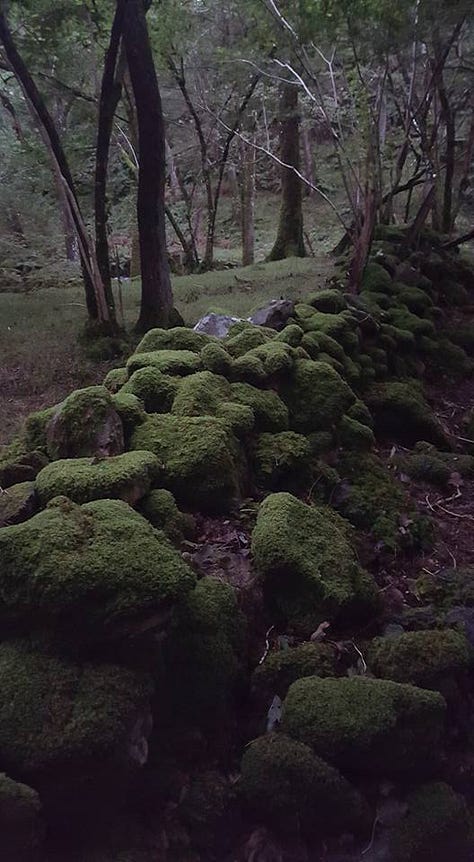
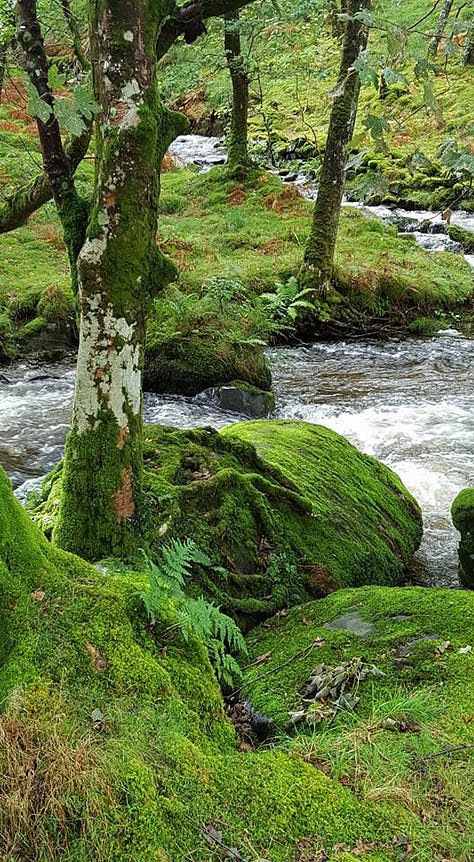
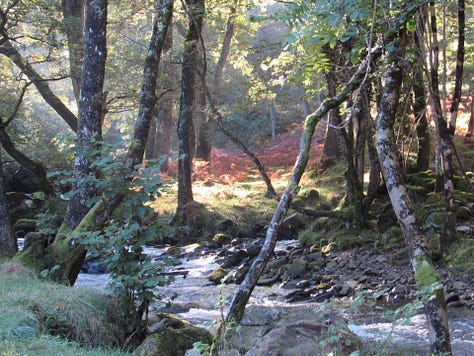
It would be good to try and cross the river and explore over there another time.
Back on the main path and faces start appearing from the rocks. It is almost as if the rocks are watching us. We question whether they are totally natural features or, if they are natural features that have been enhanced in the distant past. We may never know.
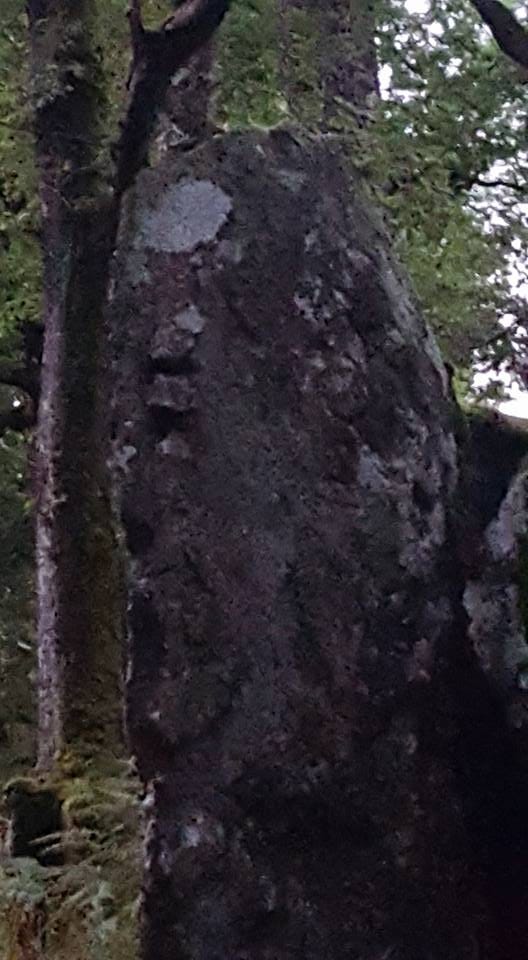
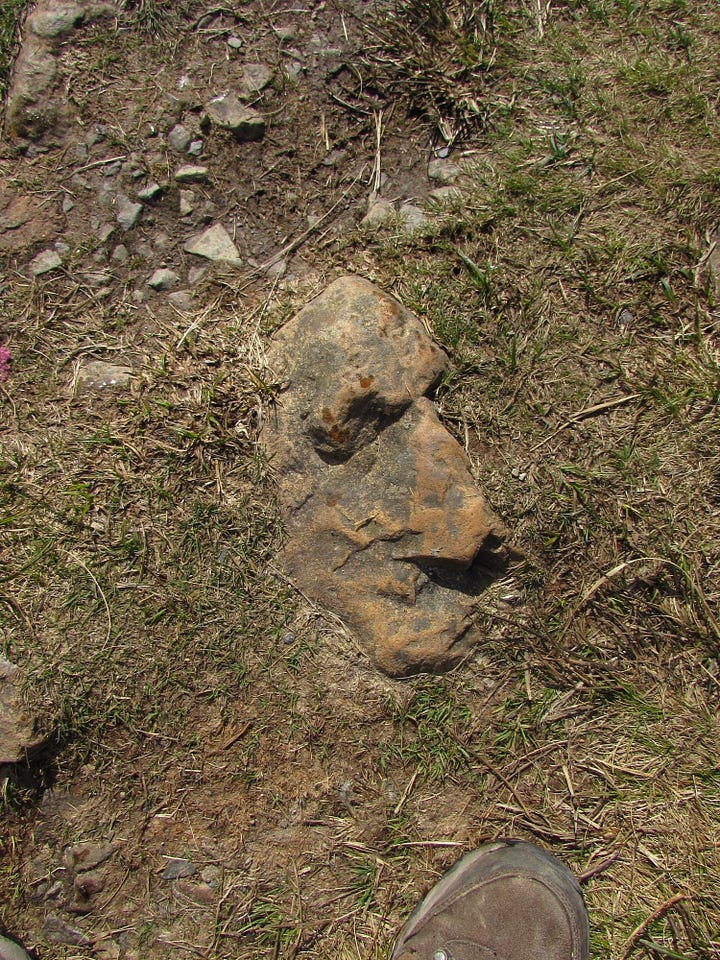
Where the edge of the woodland adjoins a small field we sit alongside the river. Working on engaging and communicating with members of the community who are none-human, seeeing if we could work out which of the trees were the mother-trees. Our presence was graced by a chaffinch, a Mistle Thrush and a robin, all of whom came a lot closer to us than would be normally expected. In the skies immediately above our heads a Red Kite circled for some considerable time.

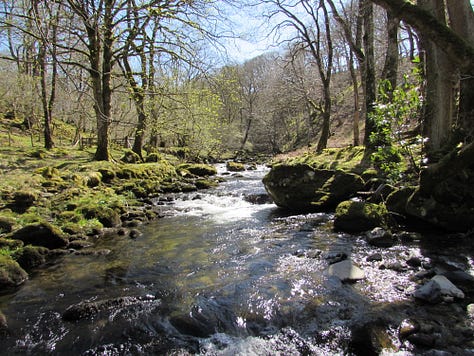
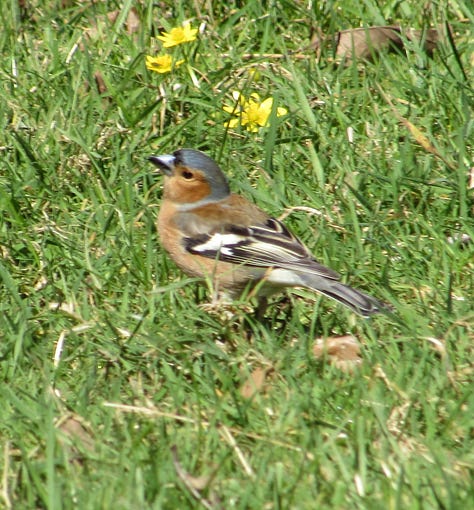
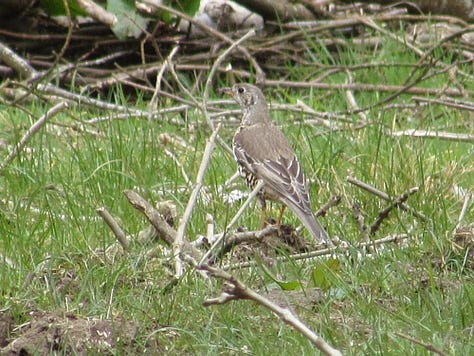

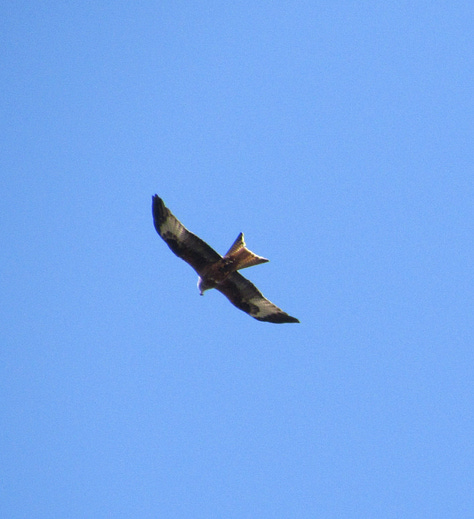
We got the distinct impression that we were being ‘checked out’. Sometimes communication does express itself in feelings.
The woodland that we were walking in, which appears in the photographs is around the footslopes of Cadair Idris in Wales. It is an ancient SSSI woodland that is a remnant of the original Celtic Rainforest that once covered vast areas of the British Isles.
Celtic Rainforests are extremely rare habitats and are only found in areas close to the sea. The Celtic rainforest is of international importance due to the variety of mosses, lichens (which are fungi and algae together as one organism) and liverworts that grow in the area, many of which are only found in Wales. Including a lichen that only exists in four places in the world.
Upon doing some research the ‘plants’ growing on the tree trunk are actually a Farinose cartilage lichen ( Ramalina farinacea). Ferns are an ancient type of plant, dating back more than 360 million years. Some ferns can live for centuries. They don't produce flowers or seeds, but spores instead. The ancestors of those ferns actually met the dinosaurs.
An amazing place to go woodlarking in.

